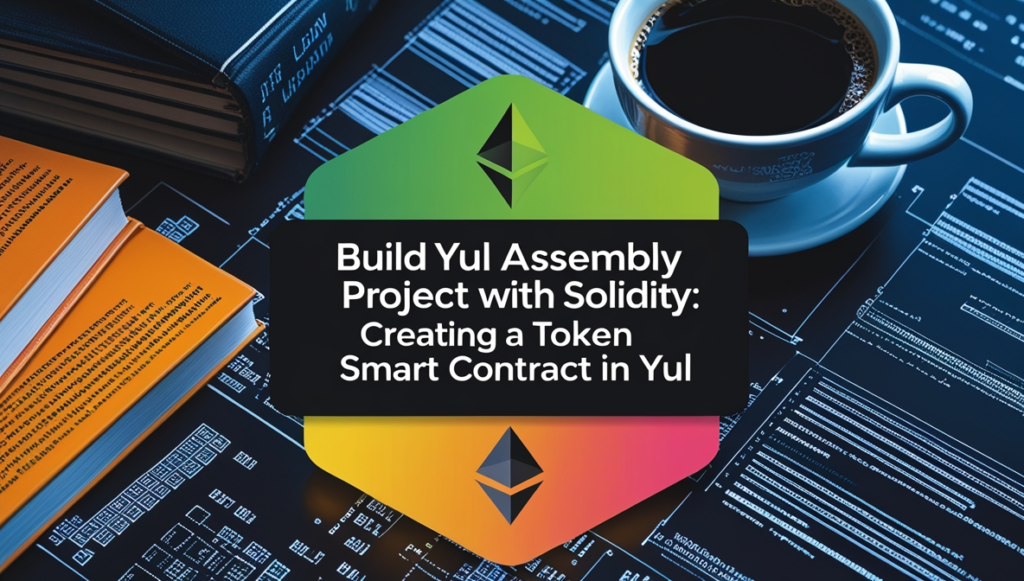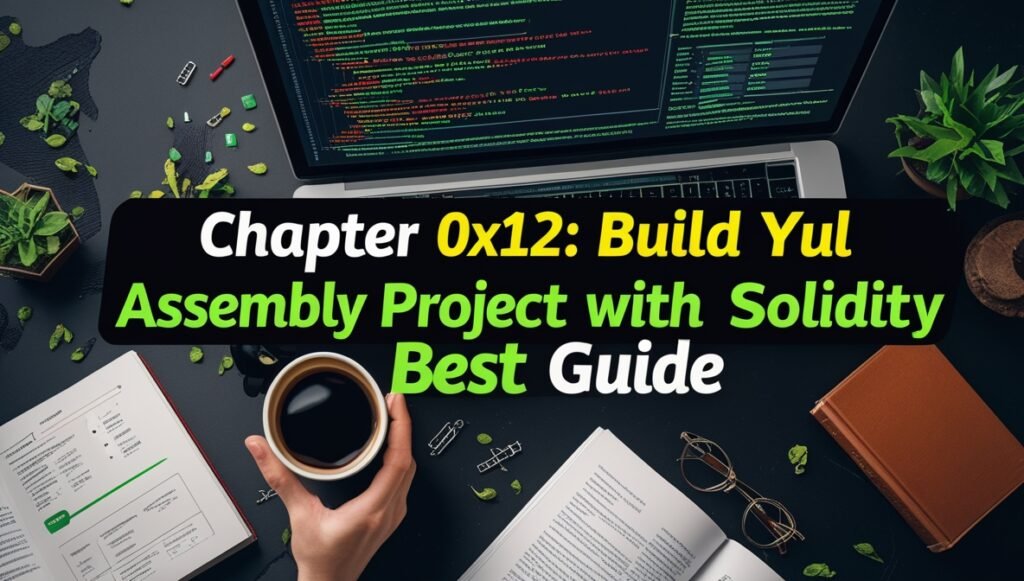Learn how to Build Yul Assembly Project with Solidity. This beginner-friendly guide covers setting up your environment, writing Yul Assembly code, and deploying optimized smart contracts with ease.
Are you a beginner curious about how to work with Yul Assembly in Solidity? You’re in the right place! This guide takes you step by step through creating projects in Yul Assembly, offering detailed explanations and practical examples for a strong foundation. By the end, you’ll be ready to Build Yul Assembly Smart Contract Project with Solidity and explore efficient, optimized smart contracts.
Table of Contents
Setting Up Your Development Environment

Before writing your first Yul Assembly smart contract project, ensure your development environment is ready. Here’s a quick checklist:
Step 1: Install Essential Tools
- Node.js: A runtime for managing dependencies and running scripts. Download it from Node.js.
- Solidity Compiler (solc): Compiles both Solidity and Yul code.
- Hardhat or Foundry: Frameworks for testing and deploying your smart contracts efficiently.
After installing Node.js, use npm to install the other tools:
npm install --save-dev hardhat solcStep 2: Initialize Your Project
Create a new directory for your Yul Assembly smart contract project and set it up:
mkdir yul-assembly-project
cd yul-assembly-project
npm init -yWith this, your environment is ready, and you can begin crafting your Yul Assembly smart contracts.
Writing Your First Yul Assembly Contract

Let’s start with a simple storage contract to get familiar with Yul’s syntax and functionality. In Solidity, the contract might look like this:
// SPDX-License-Identifier: MIT
pragma solidity ^0.8.0;
contract SimpleStorage {
uint256 private data;
function set(uint256 _data) public {
data = _data;
}
function get() public view returns (uint256) {
return data;
}
}Now, let’s enhance the set function using Yul Assembly:
function set(uint256 _data) public {
assembly {
sstore(0x0, _data)
}
}This snippet directly uses the sstore opcode to store data in the first storage slot (0x0), making the function more gas-efficient compared to standard Solidity.
Build Yul Assembly Project with Solidity: Creating a Token Smart Contract in Yul

One of the most practical applications of Yul is creating token contracts. Here’s an example of a basic ERC-20 token implemented with Yul Assembly:
// SPDX-License-Identifier: MIT
pragma solidity ^0.8.0;
contract Token {
string public name = "YulToken";
string public symbol = "YUL";
uint8 public decimals = 18;
uint256 public totalSupply;
mapping(address => uint256) balances;
constructor(uint256 _initialSupply) {
assembly {
sstore(0x0, _initialSupply)
}
}
function transfer(address _to, uint256 _value) public returns (bool) {
assembly {
let sender := caller()
let senderBalance := sload(sender)
if lt(senderBalance, _value) { revert(0, 0) }
sstore(sender, sub(senderBalance, _value))
sstore(_to, add(sload(_to), _value))
}
return true;
}
}This implementation showcases key aspects of managing balances and executing transfers using Yul for gas optimization. It’s an essential step in your journey to mastering the Yul Assembly smart contract project.
Building a Decentralized Voting System in Yul

Voting systems are an excellent beginner project. Here’s how to create one using Yul Assembly:
contract Voting {
mapping(bytes32 => uint256) votes;
function vote(bytes32 proposal) public {
assembly {
let currentVotes := sload(proposal)
sstore(proposal, add(currentVotes, 1))
}
}
function getVotes(bytes32 proposal) public view returns (uint256) {
uint256 count;
assembly {
count := sload(proposal)
}
return count;
}
}This contract is straightforward yet powerful. It uses Yul to efficiently handle vote counts for different proposals. Such projects are great for beginners starting with Yul Assembly Smart Contract Projects.
Writing Gas-Efficient DeFi Contracts in Yul
Gas efficiency is crucial in DeFi applications. Let’s create a simple staking contract:
contract Staking {
mapping(address => uint256) stakes;
function stake() public payable {
assembly {
let sender := caller()
let currentStake := sload(sender)
sstore(sender, add(currentStake, callvalue()))
}
}
function getStake(address user) public view returns (uint256) {
uint256 amount;
assembly {
amount := sload(user)
}
return amount;
}
}This example demonstrates efficient staking logic, minimizing computational overhead while ensuring functionality. It’s a perfect addition to your Build Yul Assembly Project with Solidity journey.
Compiling and Deploying Yul Smart Contracts

Step 1: Enable Optimization
Modify your Hardhat configuration file to optimize your contract:
module.exports = {
solidity: {
version: "0.8.0",
settings: {
optimizer: {
enabled: true,
runs: 200
}
}
}
};Step 2: Compile the Contract
Run the following command to compile your Yul Assembly smart contracts:
npx hardhat compileStep 3: Deploy the Contract
Deploy your contract using Hardhat scripts:
const { ethers } = require("hardhat");
async function main() {
const Token = await ethers.getContractFactory("Token");
const token = await Token.deploy(1000000);
await token.deployed();
console.log("Token deployed to:", token.address);
}
main().catch((error) => {
console.error(error);
process.exit(1);
});Best Practices for Yul Assembly Projects
- Start Small: Begin with simple projects like storage contracts before tackling complex applications.
- Test Thoroughly: Use testing frameworks like Hardhat or Foundry to ensure your contract behaves as expected.
- Enable Optimization: Always enable compiler optimization for gas-efficient contracts.
- Comment Your Code: Since Yul can be harder to read, add clear comments to explain your logic.
- Explore Resources: Learn from GitHub repositories, Reddit forums, and tutorials for deeper insights.
- Focus on Security: Follow best practices to prevent vulnerabilities in your contracts.
Wrapping Up
Building projects with Yul Assembly opens up a new world of possibilities for optimizing smart contracts and exploring low-level Ethereum development. From creating simple storage solutions to crafting efficient tokens and DeFi applications, Yul provides the tools you need to write powerful, gas-efficient code.
Take the time to experiment, learn from the examples provided, and build your skills step by step. As you grow more comfortable with Yul, you’ll be well-equipped to create innovative blockchain solutions that stand out in the Ethereum ecosystem.
Mastering a Yul Assembly smart contract project or learning how to Build Yul Assembly Project with Solidity can set you apart as a blockchain developer.


